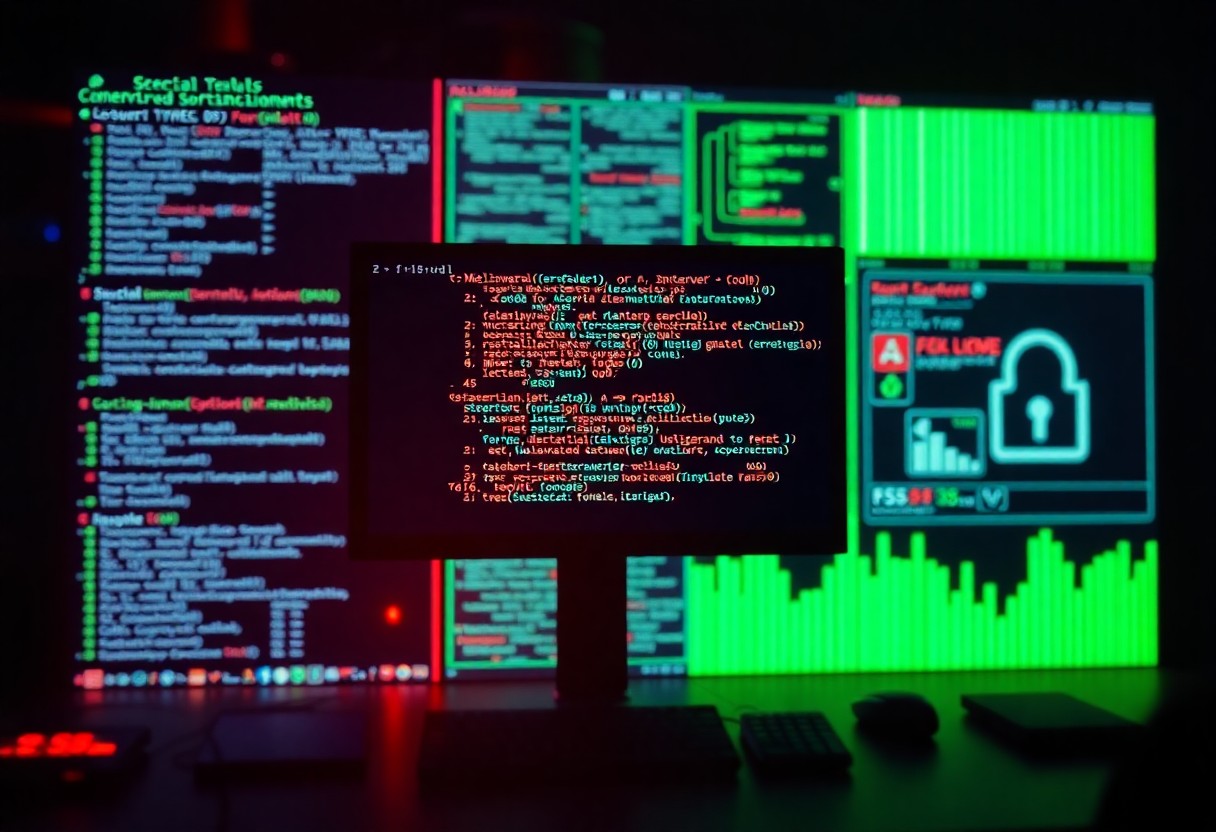Table of Contents
Threats to your digital safety are constantly evolving, making it necessary for you to understand malware and its various forms. This comprehensive guide will arm you with the knowledge you need to identify, combat, and protect your systems from the increasing complexity of cyber threats. From viruses and worms to ransomware and spyware, you will learn how these malicious programs operate and what steps you can take to enhance your defenses, ensuring your online experience is secure and reliable.
Key Takeaways:
- Types of Malware: Familiarize yourself with various forms of malware, including viruses, worms, trojans, ransomware, and spyware, to better identify threats.
- Prevention Strategies: Implement robust security measures such as regular updates, strong passwords, and reliable antivirus software to protect against cyber threats.
- Impact of Malware: Understand the potential consequences of malware attacks, including data breaches, financial loss, and reputational damage to individuals and organizations.
Types of Malware
Before entering into the details, it’s crucial to recognize the various types of malware that threaten your digital security. Different malware types can have distinct behaviors and impacts:
- Viruses
- Worms
- Trojans
- Ransomware
- Spyware
- Adware
Any understanding of these threats will empower you to better protect your systems.
| Type of Malware | Description |
| Viruses | Malicious code that attaches itself to clean files and spreads throughout your system. |
| Worms | Standalone malicious software that replicates itself to spread across networks. |
| Trojans | Deceptive software that appears harmless but can compromise your system. |
| Ransomware | Malware that locks your files and demands payment for their release. |
| Spyware | Software that secretly monitors your activities and collects your personal information. |
Viruses
Types of malware known as viruses attach themselves to legitimate programs or files, allowing them to spread throughout your system. Once activated, they can corrupt or delete your data, impacting your device’s performance and security. You should ensure your antivirus software is updated regularly to protect against such threats.
Worms
While viruses need a host to reproduce, worms can replicate themselves independently across networks. They often exploit vulnerabilities in software to spread, making them particularly dangerous. Their ability to spread without user intervention can lead to widespread damage, consuming network bandwidth and causing system failures.
A worm’s primary objective is to create multiple copies of itself, often leading to significant slowdowns on infected systems. They can proliferate quickly, infecting not just individual machines but entire networks, making it important to have firewall protections in place.
Trojans
Any Trojan malware tricks you into downloading it by appearing legitimate. Once installed, it can create backdoors for hackers, steal sensitive data, or install additional malicious software. You must exercise caution when downloading software from unfamiliar sources to avoid falling victim to Trojans.
Understanding Trojans is crucial since they often masquerade as legitimate applications or files. They can deliver payloads that compromise your system’s security, leading to identity theft or data loss, which highlights the importance of vigilant online behavior and using reliable security tools.
Ransomware
If your files become inaccessible due to ransomware, you will face a demand for payment to regain access. This type of malware can have devastating consequences on personal and business data, making it important to have regular backups and updates in place.
Ransomware attacks thrive on human error or outdated software. When infected, your data is not only encrypted but often threatened with permanent deletion if the ransom isn’t paid on time. Always back up your files to mitigate losses in such situations.
Spyware
Any spyware gathers information about you without your consent, monitoring your online activities. This information can include browsing habits, passwords, and other personal data. To protect yourself, consider using dedicated anti-spyware software to detect and remove these threats.
Worms infect systems to replicate themselves, while spyware listens in on your digital life. This malicious software often lurks in the shadows, collecting data silently, which can lead to privacy breaches and identity theft. Taking proactive steps to secure your system will help mitigate this risk.
Adware
On your devices, adware displays unwanted advertisements and may track your browsing history. While not always malicious, it can significantly impact your user experience and privacy. Utilize ad blockers and ensure your software is updated to minimize risks.
Ransomware can also take different forms. While some adware simply generates revenue through ads, others may bundle in intrusive behaviors that compromise your personal data. Be mindful of the software you install to avoid this type of malware disrupting your online activities.
Factors Contributing to Malware Attacks
All cyber threats stem from various factors that create vulnerabilities in your digital landscape. Understanding these can empower you to bolster your defenses. Key contributors include:
- Poor Cyber Hygiene
- Outdated Software
- Phishing Techniques
After identifying these factors, you can take proactive steps to mitigate risks.
Poor Cyber Hygiene
For many users, a lack of awareness about basic cybersecurity practices leads to increased susceptibility to malware. Simple actions, such as using weak passwords or neglecting security settings, can expose your systems to significant threats.
Outdated Software
You may not realize that using outdated software is a serious vulnerability that cybercriminals exploit. Regularly updating your applications and operating systems helps close security gaps that could otherwise be leveraged for malware attacks.
Software updates frequently contain patches for known vulnerabilities, addressing issues that cybercriminals might exploit. By neglecting these updates, you leave your devices open to attacks that could easily have been avoided. Keeping your software up-to-date is a fundamental yet often overlooked step in maintaining your digital security.
Phishing Techniques
Outdated tactics like phishing continue to evolve and pose significant risks. Cybercriminals often use deceptive emails and links to trick you into revealing sensitive information, which can then be used in various attacks.
The advent of sophisticated phishing techniques means that even vigilant users can fall victim to these schemes. Attackers may create emails that appear legitimate or send links that lead to fake websites, making it crucial to scrutinize communications and verify authenticity before engaging. Staying informed about these evolving tactics is vital for protecting your personal and professional information from exploitation.
Tips for Preventing Malware Infections
Your approach to cybersecurity can significantly reduce the chances of malware infections. Here are some effective strategies to consider:
- Keep your operating system and software updated.
- Install reputable antivirus and anti-malware solutions.
- Be cautious when opening email attachments or clicking links.
- Use strong, unique passwords for your accounts.
- Enable firewalls and security settings on your devices.
Recognizing these practices can significantly enhance your defense against cyber threats.
Regular Software Updates
Tips for keeping your software updated include enabling automatic updates and regularly checking for new versions of applications. Keeping your software up-to-date protects you from vulnerabilities that malware can exploit, ensuring you’re equipped with the latest security patches.
Use of Antivirus Solutions
For optimal protection against malware, it is imperative to invest in reliable antivirus software. This software can detect, quarantine, and remove malicious applications that intrude on your devices.
Infections can often go undetected without the appropriate solutions in place. Comprehensive antivirus software not only provides real-time scanning and protection but also regularly updates its virus database to shield you from newly emerging threats.
Safe Browsing Practices
One way to avoid malware is by adopting safe browsing habits, such as avoiding unknown or suspicious websites. Stick to familiar sites, and be cautious about downloading content from the internet.
Understanding the importance of safe browsing can prevent many malware infections. Always check HTTPS in the URL, avoid clicking on pop-up ads, and utilize privacy settings in your browser to create a safer online environment.

Step-by-Step Guide to Responding to a Malware Infection
Now that you understand the risk of malware infections, it’s crucial to have a structured approach for responding to an incident. Follow the steps outlined in the table below to effectively mitigate the threat.
| Step | Action |
| 1 | Identifying the Infection |
| 2 | Isolating Affected Systems |
| 3 | Removal Procedures |
| 4 | Restoring Data |
Identifying the Infection
Malware infections can manifest in various ways, including unexpected pop-ups, sluggish device performance, and unauthorized access to files. To identify an infection, observe your system closely and run antivirus scans to detect any anomalies. The earlier you spot the signs, the better equipped you will be to handle the situation.
Isolating Affected Systems
To contain the threat, you must isolate any systems that show symptoms of malware infection. This action prevents the malware from spreading to other devices in your network.
Guide your team to disconnect affected devices from the internet and any local networks. This step is crucial in halting any data exfiltration or further infection of connected systems. Ensure that the isolation measures don’t disrupt crucial operations more than necessary while prioritizing security.
Removal Procedures
Responding effectively to a malware infection involves following specific removal procedures. This could include running a malware removal tool or restoring your system to an earlier, unaffected state.
Affected systems can often be cleaned by utilizing reliable antivirus software to scan and remove malware. Depending on the severity, you may also consider restoring the system to factory settings if the infection persists. Ensure you have backups available, as this process can lead to data loss.
Restoring Data
Malware can corrupt or delete important files, making it vital to focus on restoring your data. Your recovery efforts should include utilizing backups from before the infection occurred.
A successful restoration often requires access to secure backups stored on external drives or cloud services. Make sure to verify the integrity of these backups before restoring them to your system to prevent reinfection. Maintaining robust backup routines can protect your data against future threats.
Pros and Cons of Different Antivirus Solutions
After evaluating various antivirus solutions, it’s crucial to weigh their pros and cons to make an informed choice. Each option caters to different needs and offers a unique set of features that can impact your cybersecurity strategy.
| Pros | Cons |
|---|---|
| Effective malware detection | Can slow down system performance |
| User-friendly interface | May require regular updates |
| Real-time protection | Some features may be limited |
| Variety of protection options | Cost can be a factor |
| Helps in data recovery | Subscription services can add up |
| Tech support availability | Compatibility issues with some systems |
| Regular feature enhancements | May not catch all threats |
| Customizable settings | Potential false positives |
| Compatible with multiple devices | Limited offline protection |
| Comprehensive coverage | Some complex settings may confuse users |
Free Antivirus Software
Some free antivirus software can offer basic protection against malware and viruses, making them an appealing choice for casual users. These options may include crucial features, but often lack advanced functionalities found in paid versions. If you are on a tight budget, free solutions can be a starting point; however, consider potential limitations in safeguarding your devices.
Paid Antivirus Software
Antivirus solutions that require payment typically offer comprehensive protection and additional features that enhance your security. These may include advanced malware detection, real-time protection, and robust customer support, making them a suitable choice for users who seek thorough protection against cyber threats.
Solutions in the paid antivirus space often come with a variety of subscription options, allowing you to select a plan that fits your needs. With better malware detection capabilities, frequent updates, and access to expert assistance, paid software provides a higher level of security. Evaluation of features such as data encryption and secure browsing can also enhance your protection and peace of mind.
Cloud-Based Solutions
Paid antivirus software has evolved to include cloud-based solutions, providing enhanced security without sacrificing your device’s performance. These solutions utilize cloud technology to detect hazards quickly and minimize the impact on system resources.
A significant advantage of cloud-based antivirus solutions is their ability to respond to emerging threats in real-time. By storing malware definitions and signatures in the cloud, they can efficiently update and protect your devices without requiring extensive local storage. This approach not only improves your protection but also allows for seamless updates, ensuring that you always use the latest defensive strategies against cyber risks.
Summing up
With this in mind, you now possess a comprehensive understanding of malware and its various forms that pose significant threats to your digital environment. By familiarizing yourself with the types of cyber threats and their behaviors, you are better equipped to safeguard your systems and data. Stay informed, maintain robust security measures, and be vigilant against the ever-evolving landscape of cyber threats to protect your personal and professional information effectively.
FAQ
Q: What is malware and how does it differ from other types of cyber threats?
A: Malware, short for malicious software, is a category of software designed specifically to disrupt, damage, or gain unauthorized access to computer systems. It encompasses various types such as viruses, worms, Trojans, ransomware, and spyware. Unlike other cyber threats, which may include social engineering attacks or phishing attempts, malware is a tangible piece of software that acts independently to execute harmful actions on a victim’s device.
Q: How can individuals and organizations protect themselves against malware attacks?
A: To protect against malware, individuals and organizations should implement a combination of strategies. This includes using up-to-date antivirus and anti-malware software, regularly updating operating systems and applications to fix vulnerabilities, establishing strong password policies, and employing network security measures like firewalls. Additionally, educating users about safe browsing practices and warning signs of potential malware can significantly reduce the risk of infection.
Q: What should someone do if they suspect their device is infected with malware?
A: If malware infection is suspected, the first step is to disconnect the device from the network to prevent the malware from spreading. Next, run a complete scan using reliable antivirus or anti-malware software to identify and remove the malicious software. It’s also advisable to back up important data, consider restoring the system to a previous state, and change passwords for sensitive accounts. In severe cases, seeking professional IT assistance may be necessary to ensure the device is fully cleaned and secure.





